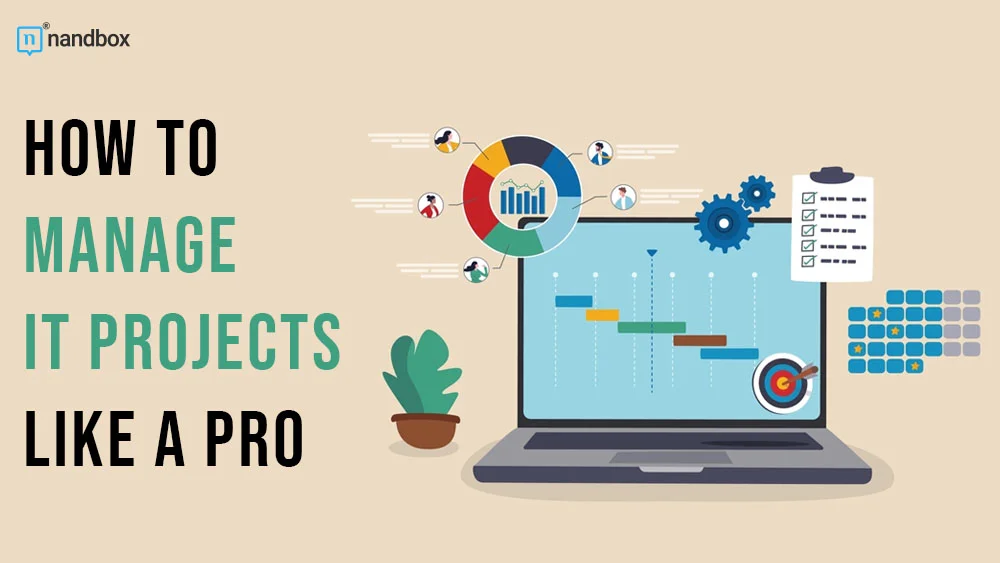Have you ever felt like your information technology (IT) projects are spinning out of control? Well, many project managers and tech professionals struggle to keep their tasks on track, on time, and within budget. But here’s the good news: with the right approach, you can manage IT projects like a seasoned professional.
Whether you’re a newbie project manager or a seasoned tech lead looking to up your game, this guide will walk you through the key strategies to make every IT project a win. Read on to level up your IT project management game!
Understand the Project Scope
Before you start planning, it’s crucial to have a clear understanding of what the project entails. This means knowing what you need to do, what the end project goals are, and what constraints you’ll be working within.
To do this, begin by asking yourself and your stakeholders the following questions:
- What is the main objective of the project?
- What are the project deliverables?
- What is the timeline for completion?
- What resources are available?
Getting clear answers to these questions will help you define the project scope. This will guide every other aspect of your project management process. And most importantly, the better you understand the scope, the less likely you are to face scope creep—where the project’s requirements start to expand beyond the original plan.
Consider working with a reputable managed IT service provider, such as Cloud Secure Tech, to help define and refine your project scope. These experts can offer valuable insights and help you identify potential challenges or opportunities you might have overlooked.
Assemble the Right Team
A project is only as good as the people working on it. You need to assemble a balanced team with the right project management skills, experience, and attitude. Make sure you look beyond the technical expertise; seek out team players who communicate well.
Once you have your team, clearly define roles and responsibilities. Make sure everyone knows what they’re supposed to do, who they report to, and how their work fits into the bigger picture. Using project staffing software, helps to streamline this process by providing a clear overview of each team member’s responsibilities and tasks. This clarity will help you avoid confusion, ensure accountability, and keep the project running smoothly.
And if you want to make your team even more productive, partner with an experienced Managed Services Provider (MSP)! An MSP can bring valuable expertise and resources to your project, filling in any gaps in your in-house capabilities.
When researching possible MSPs, opt for local service providers. For instance, if you operate in Dallas, consider working with Prototype:IT in Dallas. Such specialized experts can help you manage your IT project. They can provide on-site support when needed, responding quickly to urgent issues.
Develop a Detailed Project Plan
Project planning is one of the most crucial phases in any IT project. A well-thought-out plan acts as a roadmap, guiding your team from start to finish.
Here’s what your project should include:
Timeline
Break down the project into phases or milestones, each with a specific deadline. This makes it easier to track progress and ensures that the project stays on schedule.
Budget
Outline the financial resources available and how you’ll allocate them. Be sure to include a contingency budget for unexpected expenses.
Resource Allocation
Determine who will be responsible for each task and ensure that they have the resources they need to get the job done. This will ensure you complete your project on time and efficiently. Avoid overallocation by using techniques like resource leveling. This helps balance workloads and makes better use of resources.
Risk Management
Identify potential risks and develop strategies to mitigate them. This could involve anything from technical challenges to delays in receiving critical resources.
Having a detailed project plan does more than help you stay organized. It also gives you a framework to measure progress and make adjustments as needed. It ensures the entire team stays on track, adapts to challenges, and delivers quality results on time. You can use a project proposal template for structuring that all to align with business goals and stakeholder expectations.
Utilize Project Management Tools
Gone are the days when managing a project meant relying on spreadsheets and email threads. Today, there are countless effective project management apps available that can help you keep everything on track.
Tools like Trello, Asana, Gantt Charts, and Jira can help make project management easier by allowing you to:
- Assign tasks to team members
- Track progress
- Communicate with your team
- Store project-related document
- Monitor deadlines
When choosing a project management tool, opt for one that works best for your team and project needs. The right project management software can significantly reduce the amount of time you spend on administrative tasks. This allows you to focus more on managing the project itself.
Encourage Open Communication
Open communication plays a vital role in holding your project together. When everyone feels heard and informed, your team becomes more than the sum of its parts. You’ll notice increased productivity, faster problem-solving, and a boost in overall morale.
But remember, effective communication is a two-way street. As a project manager, your role is more than just talking but listening intently. Pay close attention to feedback from your team and stakeholders. Their insights can be invaluable, offering perspectives you might have missed.
When you prioritize clear, consistent communication, you’re doing more than just keeping everyone in the loop. You’re building trust, fostering team collaboration, and creating a sense of shared purpose. This approach can help boost team morale and engagement, driving your project forward with increased momentum.
Stay Flexible
Regardless of how well you plan, you may still encounter some challenges. Maybe an essential resource becomes unavailable, or a technical issue arises. The key to professional project management is staying flexible and being ready to adapt when necessary.
However, this doesn’t mean abandoning your project plan at the first sign of trouble. Instead, be willing to make adjustments to your plan to keep the project moving forward.
If a major issue arises, gather your project team members, assess the situation, and develop a new plan of action. The ability to pivot when necessary is what separates successful project managers from the rest.
Focus on Quality
It’s easy to get so caught up in meeting deadlines and staying within budget that you lose sight of the most essential aspect of any project: quality. Delivering a high-quality product or service should always be your top priority.
This means:
Regular Testing
Start by setting clear quality standards early on. This will give your project team a shared goal to work towards. Regularly test if your team meets the standards to catch bugs early. This will save you a lot of time and headaches later in the project.
Request for Feedback
Encourage your team and stakeholders to share their honest opinions. Their insights can lead to significant improvements. For example, a team member might notice a usability issue, or a stakeholder might suggest a feature that would increase efficiency.
Keep Detailed Documentation
Documentation is key. Keep a detailed record of your project’s journey, including vital decisions, challenges, and solutions. This will be an invaluable resource for future projects.
By prioritizing product quality, you’ll create one that delights users and impresses stakeholders. It may require extra effort, but the rewards are well worth it. A reputation for excellence can open doors to new opportunities.
Conclusion
Managing IT projects like a professional requires a blend of careful planning, clear communication, and adaptability. By following these strategies, from understanding your project scope to prioritizing quality, you can navigate the complexities of IT projects with confidence. Remember, every project is unique, so be prepared to adapt your approach as needed. With dedication and commitment, you can consistently deliver successful IT projects that exceed expectations.





